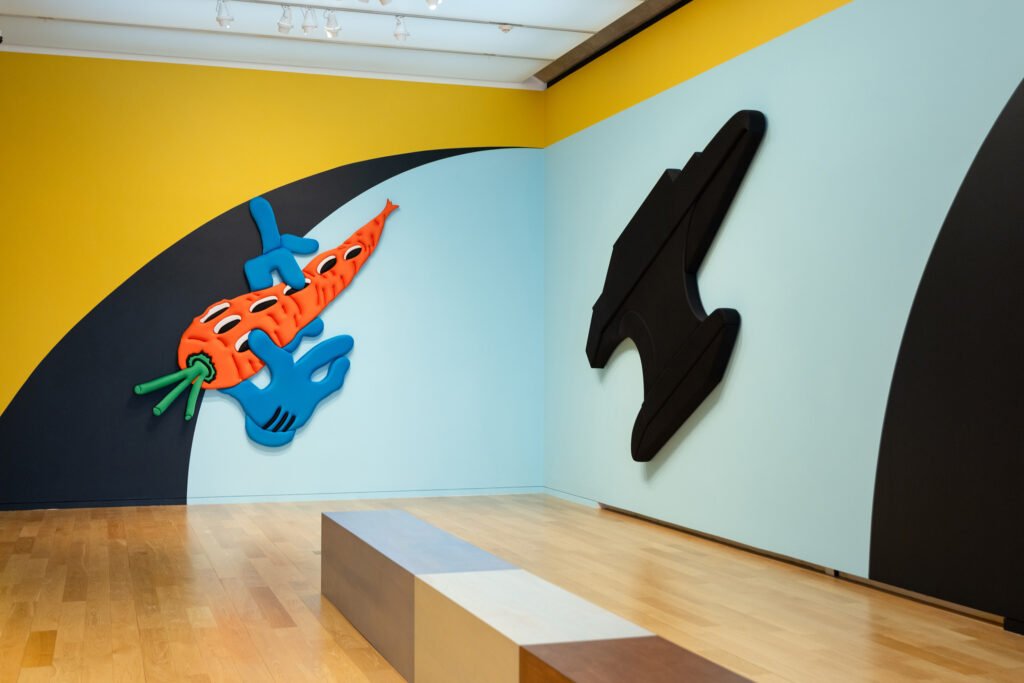
Welcome to One Fine Show, where Observer highlights a recently opened exhibition at a museum not in New York City, a place we know and love that already receives plenty of attention.
“The Whale,” a newly opened show dedicated to the painting practice of Alex da Corte (b.1980) at the Modern Art Museum of Fort Worth, features more than forty paintings by the bona fide genius. If you’re only familiar with Da Corte from his work at museums and biennials, you might not be so familiar with that practice. Institutionally, he tends to be better known for his installations and video work. This week marks the opening of Art Basel, so it’s as good a time as any to talk about his paintings.
How many art fairs have I wandered, blinking, looking for anything good, only to trip into a wall of attractive plexiglass, or something, and wonder, ‘What genius made this?’ The answer is often Da Corte, but you can’t blame me for not immediately recognizing his work because it’s so diverse and inventive. You can’t say that often about art fair pieces, which are often chosen precisely because of how recognizable they are. The general buyer at a fair is, after all, looking for something that signifies itself immediately as a work by a certain artist, whose last name will be turned into a noun when it is hung, i.e., “Oh, that’s my Bleckner.”
SEE ALSO: Paola Mura Reflects On the Material Universality of Artist Maria Lai’s Work
As this exhibition demonstrates, best of luck doing that with Da Corte. It’s difficult to imagine that the same artist made both Siren (After E K Charter) (2015)—an intellectual affair that riffs on Ellsworth Kelly’s Charter (1959) while folding in other Da Corte fascinations like Marcel Duchamp and the Tim Burton Batman movies—and Electronic Renaissance (2021), an image of two horses in love that is taken from a Disney storybook and is, per the catalogue, “in the running for Da Corte’s gayest painting.” The styles are completely different, both conceptual in different ways, though still painted with great attention and technique, again, in different ways.


There is a light theme running through some of these works in that they are taken from the covers of CD albums, but even these are so mutated that their origins become hard to guess. The most album cover-like image in the show is the one that appears on the cover of the catalogue, The Anvil (2023), an ACME-inspired affair in neoprene and styrofoam.
Like his installations and videos, Da Corte’s paintings concern the difficulties and pleasures of being a painter, and his works are shown with those of forebears whose output considers the same. Robert Mapplethorpe’s Self Portrait (1980) is similarly inspired by Duchamp’s alter ego Rrose Sélavy and dares to ask why the artist shouldn’t be the main subject of a work. Vija Celmins asks if anyone can or should try to replicate the beauty of the ocean. Da Corte has said the name of his show references “the Jungian night sea journey, looking backward and collecting the past as an act of commingling with spirits, either cultural or personal.” In this, say Da Corte and Jung, the identity develops.
“Alex Da Corte: The Whale” is at the Modern Art Museum of Fort Worth through September 7, 2025.

